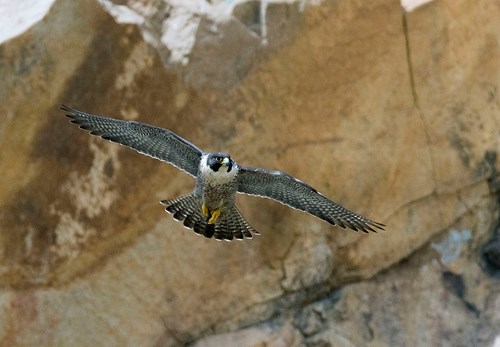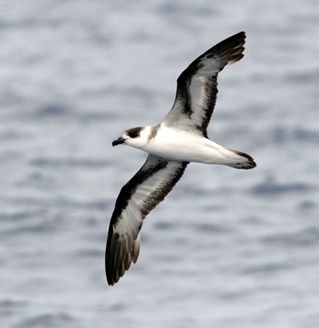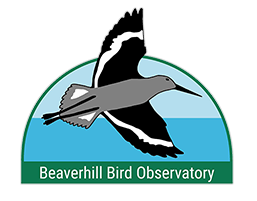Impact of Hurricanes and Climate Change on Birds
Wednesday, March 18, 2020Hurricanes 101
Hurricanes are a natural phenomenon that occur around the world including in the Atlantic Ocean, Caribbean Sea, and Gulf of Mexico. In this region, on average, six major hurricanes develop between June to November every year. The strong winds, excessive rainfall, surging tides, and flooding make hurricanes one of the deadliest natural disasters, costing human lives and billions of dollars in infrastructure damage annually. Yet, have you ever wondered what impacts hurricanes have on the natural world, particularly when talking about birds? In this blog, we will explore the impacts of hurricanes on the avian world, and the role of climate change in this process.
Birds and Hurricanes
Birds use environmental cues to predict weather patterns. They can detect changes in air pressure caused by a brewing storm and, in response, alter their behavior to brace for the upcoming weather events. Resident species often seek shelter in shrubs and trees during a hurricane. Many migratory species prefer to migrate ahead of a hurricane. However, it is difficult to be 100% safe from hurricanes. Birds often get sucked into hurricanes as they try to fly away from the oncoming weather. Once sucked in, it is extremely hard for them to break out of the eye of the storm. The few brave birds (tagged with GPS monitors) that do break away, often continue their journey successfully, but most birds are not so lucky. Many birds end up traveling inland with the storm, which wastes their time and energy, not to mention the extra distance that they have to travel to get to their wintering grounds. Hundreds of birds die as a direct impact of each hurricane. Let us examine a few real-life stories to fully understand the impacts of hurricanes on birds.
Peregrine Falcon #5735

Peregrine Falcon #5735 was banded with a satellite transmitter in 1997 near Fort Chippewan, Alberta, by two Canadian Wildlife Service biologists, Geoff Holroyd (chair of BBO) and Jason Duxbury. After leaving her nest in late September, the falcon traveled a whooping 3,900 kilometers in 12 days to the coast of Apalachee Bay, Florida in the Gulf of Mexico. She continued her journey making her way to Cuba, and then Haiti, and scientists thought that she was likely travelling to South America for winter. Alas, things turned sideways for her at this point. As the falcon was crossing the Caribbean Sea, hurricane Mitch (category 5) developed to the west of her. She failed to cross the Caribbean due to strong hurricane headwinds and turned back north making her way to Haiti. After spending a few days in Haiti, the falcon made another attempt to cross the Caribbean Sea yet failed again due to continuing hurricane activity. She retuned north to the island of Navassa where she spent a few days before making another attempt to cross the Caribbean Sea. During her last attempt, the falcon encountered headwinds from the hurricane again except this time she could not break away from the hurricane and died as a result. The last signal received from the falcon located her 640 km south-west of Navassa in middle of the sea. The signal was lost at this point, leading scientists to conclude that our falcon died likely from sheer exhaustion.
Sharks, Terrestrial Birds, and Hurricanes
Scientists have also found other examples of how hurricanes impact birds. While studying the diet of Tiger Sharks, scientists found that part of their diet actually consisted of birds. 105 Tiger Sharks were captured to examine their stomach content, and 41 of these sharks had bird remains in their stomachs. Not just any birds either, but terrestrial bird such as: Eastern Kingbird, Marsh Wren, Eastern Meadowlark, and Yellow-bellied Sapsucker. Looking for an explanation, the scientists determined that these birds must have fallen from the sky. During migration, when birds are exerting energy in order to travel great distances, a single bad weather event like a hurricane, can exhaust them to the point where they cannot fly anymore and fall into the oceans, becoming shark food. These events occur frequently enough that female Tiger Sharks travel to the Caribbean Sea to have their young during the autumn when birds are migrating to South America.
Climate Change, Hurricanes, and Future of Bird Conservation
Over the next few decades, the intensity of extreme weather events is expected to increase due to climate change and hurricanes are no exception. We are already seeing more category 4 and 5 hurricanes then before, i.e., lower category hurricanes are transforming into higher category. These intensifying hurricanes have a negative impact on the birds. Black-capped Petrels, for example, are an endangered species of seabird that lives near the south-eastern cost of the United States. The Black-capped Petrel population is small with only ~ 2,000 individuals and the region that they live in is prone to hurricanes. Over the last few decades, 100s of petrels have been killed by hurricanes pushing and displacing them. This number, despite being small, is a matter of serious concern. As climate change worsens hurricanes, the intensifying weather will also have a negative impact on terrestrial-migratory birds, not to mention us humans. You can read about how climate change impact bird migration in one of our previous blogs.
What can we do?
Unplug our electronics when not in use! Electronic appliances ranging from a phone charger to coffee maker draw a small amount of energy even when they are not in use. This phenomenon is called energy vampires. According to some estimates, these appliances can cost an average household up to $200 a year in energy costs. Furthermore, the cost of this wasted energy produces a lot of greenhouse gases which is contributing to climate change. Therefore, you can save the environment and some money by unplugging your electrical devices! Other helpful tips on how to reduce your carbon footprint to reduce climate change can be found on our website.
Picture Credit
Mike Trenchard, Earth and Sciences & Image Analysis Laboratory, NASA Johnson Space Centre, retrieved on March 16, 2020, from https://commons.wikimedia.org/wiki/File:Hurricane_Isabel_from_ISS.jpg
Peregrine Falcon in flight across Morro Rock in Morro Bay, California. By Kevin Cole, Pacific Coast USA. 29 June 2012. https://commons.wikimedia.org/wiki/File:Falco_peregrinus_Morro_Rock.jpg
Black-capped Petrel, Location: Gulf Stream off of Hatteras, North Carolina, United States. By Patrick Coin. 23 June 2007. https://commons.wikimedia.org/wiki/File:Pterodroma_hasitataPCCA20070623-3608B.jpg
Additional Readings
http://www.ussartf.org/hurricanes.htm
https://www.forbes.com/sites/grrlscientist/2017/09/08/where-do-birds-go-in-ahurricane/#73665fb4254a
https://www.audubon.org/news/how-do-hurricanes-affect-birds
Breuner, Creagh W., Rachel S. Sprague, Stephen H. Patterson, and H. Arthur Woods. "Environment, behavior and physiology: do birds use barometric pressure to predict storms?." Journal of Experimental Biology 216, no. 11 (2013): 1982-1990. https://jeb.biologists.org/content/jexbio/216/11/1982.full.pdf
https://neotropical.birds.cornell.edu/Species-Account/nb/species/bkcpet/distribution
Geoff Holroyd and Jason Duxbury, Canadian Wildlife Service, Environment Canada. Travels of Peregrine Falcon #5735
https://www.sciencedaily.com/releases/2019/05/190521124519.htm
Drymon, J. M., K. Feldheim, A. M. V. Fournier, E. A. Seubert, A. E. Jefferson, A. M. Kroetz, and S. P. Powers. "Tiger sharks eat songbirds: Scavenging a windfall of nutrients from the sky." Ecology 100, no. 9 (2019): e02728.
https://www.audubon.org/field-guide/bird/black-capped-petrel
Pistorius, Pierre A., Mark A. Hindell, Yann Tremblay, and Gavin M. Rishworth. "Weathering a dynamic seascape: influences of wind and rain on a Seabird’s year-round activity budgets." PloS one 10, no. 11 (2015).
Hass, T., J. Hyman, and B. X. Semmens. "Climate change, heightened hurricane activity, and extinction risk for an endangered tropical seabird, the black-capped petrel Pterodroma hasitata." Marine Ecology Progress Series 454 (2012): 251-261.
https://www.directenergy.com/blog/should-you-unplug-appliances-when-not-in-use/
Blog Posts
- What is Climate Change
- Drought: What Can We Do?
- Migration and Climate Change; a Complicated Relationship (Part 1)
- Migration and Climate Change; a Complicated Relationship (Part 2)
- Climate Change and Birds’ Resources
- Ladder to Extinction
- Arctic Warming and Ecosystem Impacts
- Climate Change Connection to Mountain Pine Beetle
- Tackling Climate Change Denialism
- Impact of Climate Change on Bluebirds
- An Introduction to Climate Change
- Great Decline of Aerial Insectivores
- Role of Oceans in Fighting Climate Change
- Role Of Forests In Fighting Climate Change
- Impact of Climate Change on Shorebirds
- Impact of Hurricanes and Climate Change on Birds
- An Introduction to Climate Change.
- Impact of Forest Fires, and Climate Change on the Nature
- Impacts of Climate Change on Owls
- Impacts of Climate Change on Birds of Prey
- Whitebark Pine and Clark's Nutcracker
- COVID 19 & The Environment
- Impact of Global Warming on Bird Anatomy and Colour Polymorphism
- Climate Change & West Nile Virus
- All Posts

